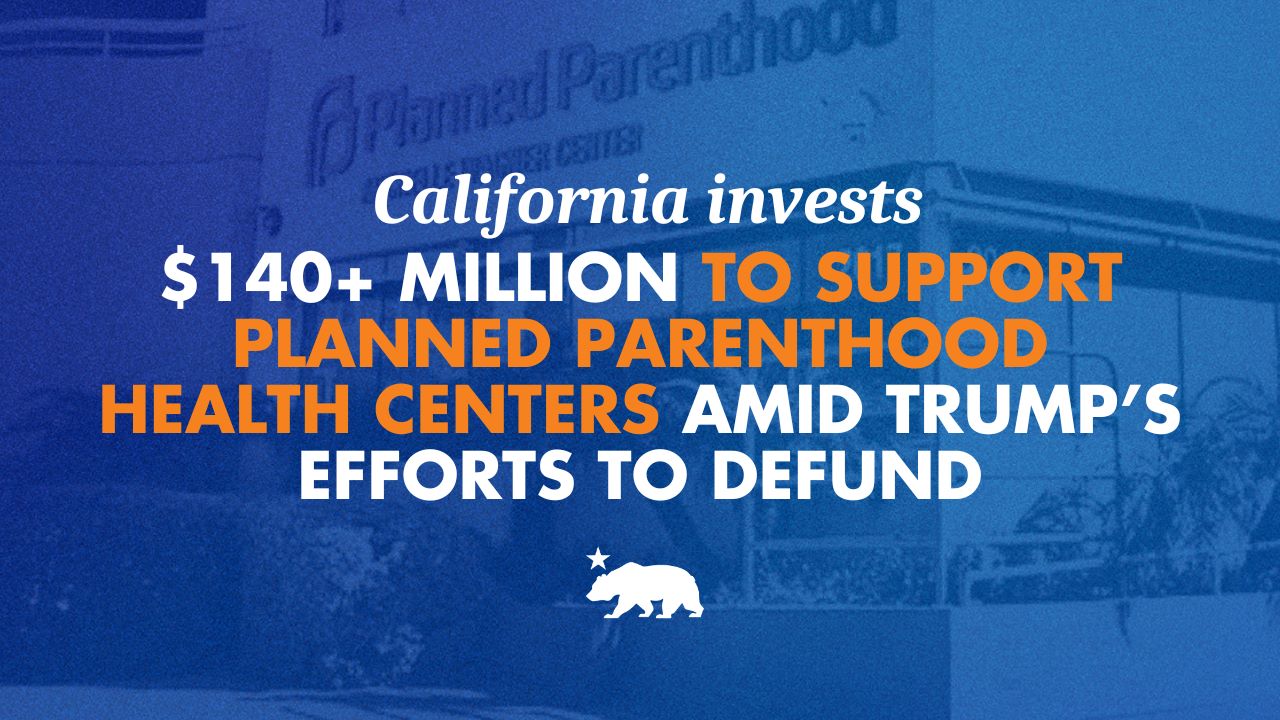Report on California Public Health Concerns in Relation to Sustainable Development Goals
A poll commissioned by the California Wellness Foundation indicates that significant challenges persist in California regarding public health and well-being, directly impacting the state’s progress toward key United Nations Sustainable Development Goals (SDGs). The findings reveal widespread concern over healthcare affordability, mental health access, and the socioeconomic effects of immigration policies.
Healthcare Affordability and Access: A Challenge to SDG 3
The poll highlights financial barriers to healthcare that undermine progress towards SDG 3: Good Health and Well-being, which aims to ensure healthy lives for all. The high cost of care remains a primary concern for the population.
Key Findings on Health and Well-being
- Nearly 80% of voters are worried about the cost of healthcare.
- A significant majority of residents want improved access to mental health services.
- Approximately 90% of those polled believe the next governor should prioritize implementing caps on out-of-pocket health costs to alleviate financial burdens.
Case Study: Economic Impact on Individuals
The financial strain is significant even for healthy individuals. One self-employed resident reported monthly healthcare expenses exceeding $1,000 between premiums and copayments, forcing compromises on retirement savings and other essential purchases. This situation, where half of Californians have delayed care due to cost, demonstrates a systemic barrier to achieving universal health coverage as outlined in SDG 3.
Immigration Policy and Its Impact on Health Equity (SDG 10 & SDG 16)
Federal immigration enforcement actions are identified as a major factor exacerbating health disparities and creating fear within communities. This trend directly conflicts with SDG 10: Reduced Inequalities and SDG 16: Peace, Justice and Strong Institutions by marginalizing vulnerable populations and eroding trust in public services.
Barriers to Healthcare for Vulnerable Populations
- 57% of respondents statewide expressed concern about federal immigration enforcement.
- One in five people reported knowing someone who is afraid to seek medical care due to fear of immigration activity.
- This deterrent to accessing essential health services disproportionately affects specific communities, with 60% of Latinos polled in Los Angeles knowing someone facing financial hardship tied to immigration actions.
Deterioration of Mental Health
The poll quantifies the negative impact on mental well-being, a core component of SDG 3.
- Nearly 40% of state residents know an individual whose mental health has worsened as a result of U.S. Immigration and Customs Enforcement (ICE) raids.
- This demonstrates a direct link between institutional actions and adverse public health outcomes, undermining the goal of promoting mental health and well-being.
Economic Precarity and Policy Priorities (SDG 1 & SDG 8)
The findings connect health-related financial stress to broader economic instability, affecting progress on SDG 1: No Poverty and SDG 8: Decent Work and Economic Growth. The high cost of living, driven in part by healthcare expenses, threatens the economic security of Californians.
Voter Expectations for State Leadership
- 72% of Californians worry they will be unable to afford to live in the state long-term.
- Voters clearly expect the next administration to address these interconnected issues.
- Key priorities identified for the next governor include affordable housing, affordable healthcare, and reliable mental health support, reflecting a demand for policies that support a sustainable and equitable quality of life for all residents.
Analysis of Sustainable Development Goals in the Article
1. Which SDGs are addressed or connected to the issues highlighted in the article?
-
SDG 3: Good Health and Well-being
This goal is central to the article, which focuses on the high cost of healthcare, the need for better access to mental health services, and the overall quality of life for Californians. The text explicitly discusses concerns about healthcare affordability and mental well-being.
-
SDG 10: Reduced Inequalities
The article highlights how specific population groups, particularly the Latino and immigrant communities, face unique barriers to healthcare. The fear of immigration enforcement actions creates inequality in access to medical care and worsens mental health outcomes for these groups, connecting directly to the goal of reducing inequalities.
-
SDG 1: No Poverty
The article connects high healthcare costs to financial hardship. It mentions that medical expenses are a top monthly expense for individuals and that these costs force people to make financial trade-offs, such as reducing retirement savings. This demonstrates how unaffordable healthcare can contribute to financial vulnerability and poverty.
2. What specific targets under those SDGs can be identified based on the article’s content?
-
Under SDG 3: Good Health and Well-being
- Target 3.8: Achieve universal health coverage, including financial risk protection, access to quality essential health-care services and access to safe, effective, quality and affordable essential medicines and vaccines for all.
The article directly addresses this target by highlighting that “nearly 80% of voters are worried by the cost of health care” and that “Nearly 90% of people polled statewide said they’d like to see the next governor prioritize caps on out-of-pocket health costs.” The personal account of Lisa Kaczmarczyk, who pays over $1,000 per month on health expenses despite being healthy, exemplifies the lack of financial risk protection.
- Target 3.4: By 2030, reduce by one third premature mortality from non-communicable diseases through prevention and treatment and promote mental health and well-being.
This target is relevant due to the article’s emphasis on mental health. The poll found that “most want better access to mental health services” and that “Nearly 40% of state residents surveyed said they know someone whose mental health has worsened as a result of U.S. Immigration and Customs Enforcement raids,” indicating a clear need to promote mental well-being.
- Target 3.8: Achieve universal health coverage, including financial risk protection, access to quality essential health-care services and access to safe, effective, quality and affordable essential medicines and vaccines for all.
-
Under SDG 10: Reduced Inequalities
- Target 10.2: By 2030, empower and promote the social, economic and political inclusion of all, irrespective of age, sex, disability, race, ethnicity, origin, religion or economic or other status.
The article shows how individuals are being excluded from essential services based on their perceived immigration status. The finding that “One in five people indicated that they know someone who is afraid to seek medical care because of immigration activity” demonstrates a lack of social inclusion for this vulnerable group.
- Target 10.2: By 2030, empower and promote the social, economic and political inclusion of all, irrespective of age, sex, disability, race, ethnicity, origin, religion or economic or other status.
-
Under SDG 1: No Poverty
- Target 1.3: Implement nationally appropriate social protection systems and measures for all… and by 2030 achieve substantial coverage of the poor and the vulnerable.
The high out-of-pocket healthcare costs described in the article represent a gap in social protection. The mention that “60% of people polled [in the Latino community in Los Angeles] know someone experiencing financial hardship that’s tied to immigration actions” and that an individual has to prioritize medical bills over retirement savings points to how healthcare costs can push people towards poverty.
- Target 1.3: Implement nationally appropriate social protection systems and measures for all… and by 2030 achieve substantial coverage of the poor and the vulnerable.
3. Are there any indicators mentioned or implied in the article that can be used to measure progress towards the identified targets?
-
Indicators for SDG 3 (Good Health and Well-being)
- Proportion of the population with high out-of-pocket health expenditures: The article provides a specific example of an individual paying “$502 a month in premium costs… plus an average of $576 a month in copays and other costs,” which serves as a direct measure for this indicator. The poll result that “nearly 80% of voters are worried by the cost of health care” implies this is a widespread issue.
- Prevalence of mental health issues within the population: The statistic that “Nearly 40% of state residents surveyed said they know someone whose mental health has worsened as a result of U.S. Immigration and Customs Enforcement raids” can be used as a proxy indicator to measure the mental well-being of the community.
- Proportion of the population delaying care due to cost: The article mentions that “like half of Californians, she has delayed seeking some care,” which is a clear indicator of barriers to accessing healthcare.
-
Indicators for SDG 10 (Reduced Inequalities)
- Proportion of a specific population group (immigrants/Latinos) afraid to seek essential services: The finding that “One in five people indicated that they know someone who is afraid to seek medical care because of immigration activity” is a direct indicator of inequality in access to healthcare based on perceived status.
-
Indicators for SDG 1 (No Poverty)
- Proportion of the population experiencing financial hardship due to specific policies or costs: The article states that in the Latino community in Los Angeles, “60% of people polled know someone experiencing financial hardship that’s tied to immigration actions,” which can be used to measure the economic impact of policies on vulnerable populations.
4. Summary Table of SDGs, Targets, and Indicators
| SDGs | Targets | Indicators |
|---|---|---|
| SDG 3: Good Health and Well-being |
3.8: Achieve universal health coverage, including financial risk protection and access to affordable care.
3.4: Promote mental health and well-being. |
– Percentage of the population worried about the cost of healthcare (nearly 80%). – Percentage of the population that has delayed seeking care (half of Californians). – Percentage of residents who know someone whose mental health has worsened due to external factors (nearly 40%). |
| SDG 10: Reduced Inequalities | 10.2: Promote social inclusion of all, irrespective of origin or other status. |
– Percentage of people who know someone afraid to seek medical care due to immigration activity (one in five). – Disproportionate concern about immigration enforcement in the Latino community. |
| SDG 1: No Poverty | 1.3: Implement social protection systems to cover the poor and vulnerable. |
– High out-of-pocket health expenses forcing trade-offs with other essential savings (e.g., retirement). – Percentage of a specific community experiencing financial hardship tied to immigration actions (60% in the Latino community in LA). |
Source: calmatters.org







